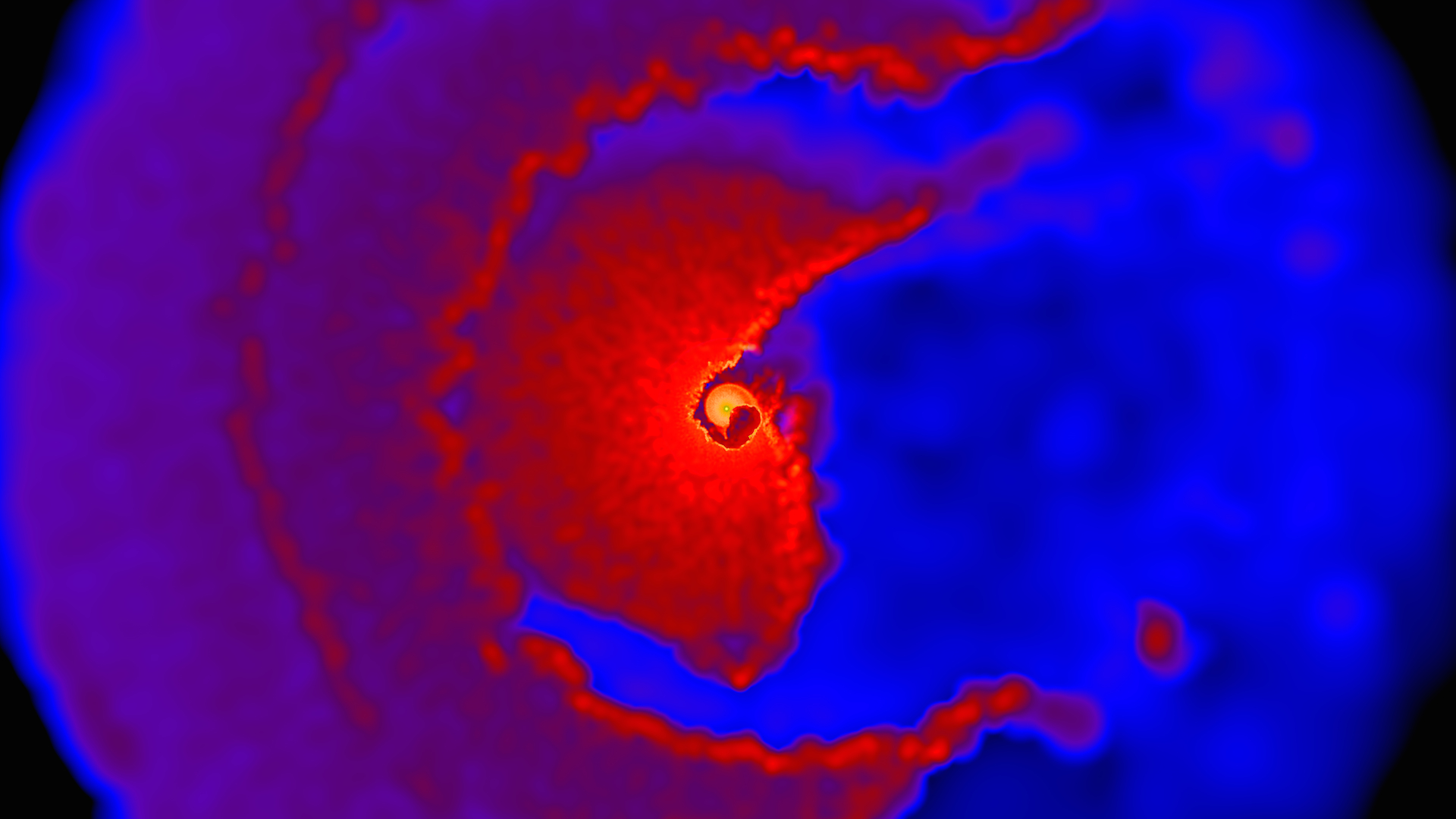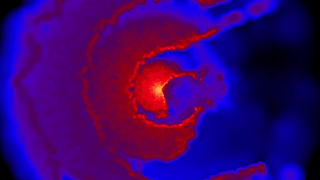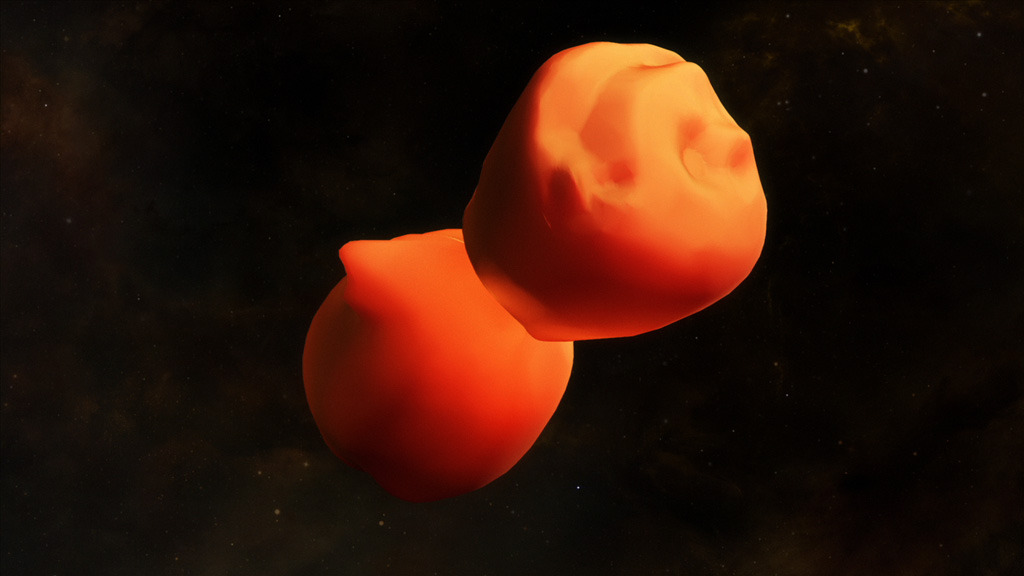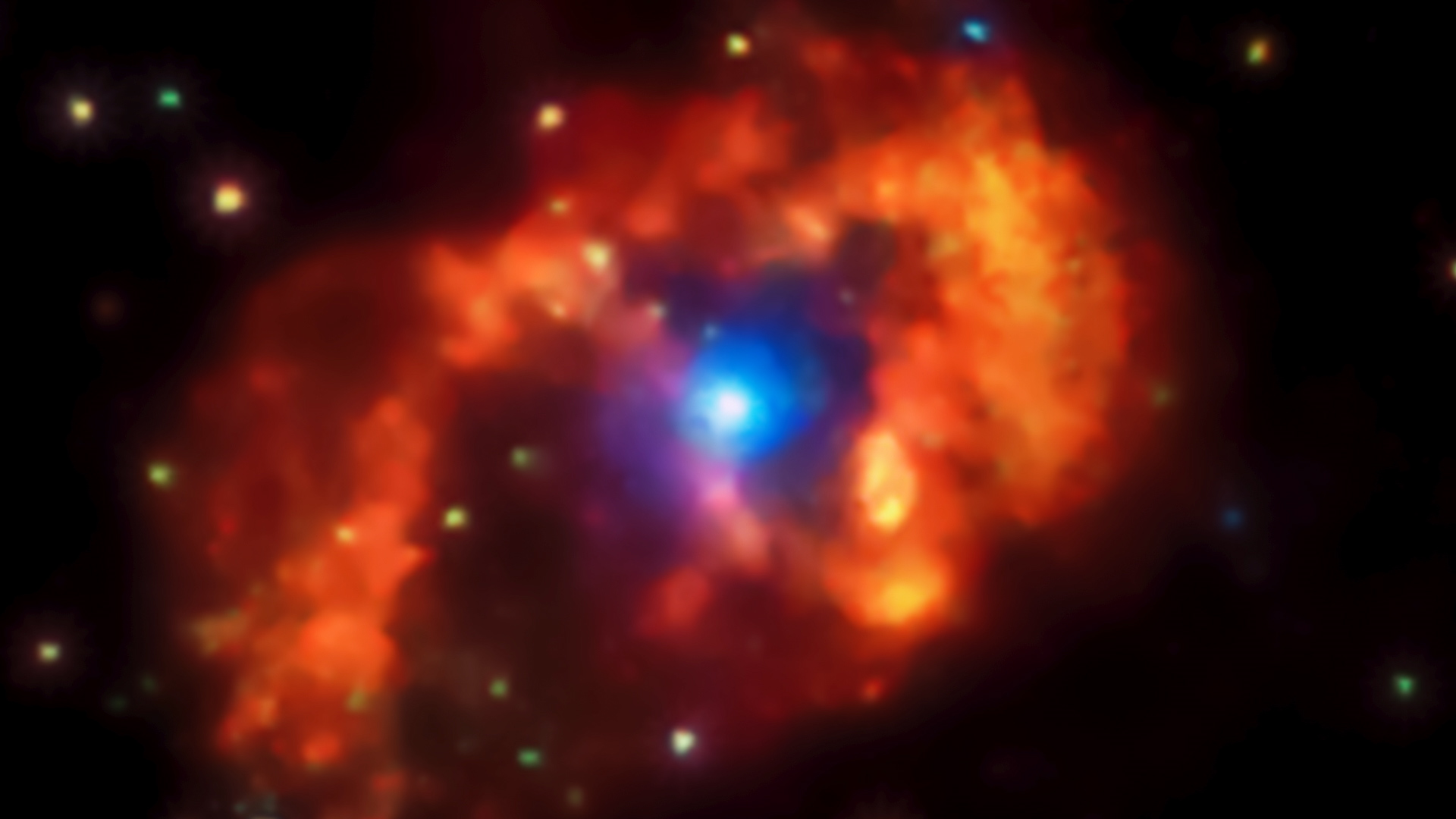Eta Carinae's Homunculus Nebula Now in 3D
An international team of astronomers has developed a 3D model of a giant cloud ejected by the massive binary system Eta Carinae during its 19th century outburst. Eta Carinae lies about 7,500 light-years away in the southern constellation of Carina and is one of the most massive binary systems astronomers can study in detail. The smaller star is about 30 times the mass of the sun and may be as much as a million times more luminous. The primary star contains about 90 solar masses and emits 5 million times the sun's energy output. Both stars are fated to end their lives in spectacular supernova explosions.
Between 1838 and 1845, Eta Carinae underwent a period of unusual variability during which it briefly outshone Canopus, normally the second-brightest star. As a part of this event, which astronomers call the Great Eruption, a gaseous shell containing at least 10 and perhaps as much as 40 times the sun's mass was shot into space. This material forms a twin-lobed dust-filled cloud known as the Homunculus Nebula, which is now about a light-year long and continues to expand at more than 1.3 million mph (2.1 million km/h).
Using the European Southern Observatory's Very Large Telescope and its X-Shooter spectrograph, the team imaged near-infrared, visible and ultraviolet wavelengths along 92 separate swaths across the nebula, making the most complete spectral map to date. The researchers have used the spatial and velocity information provided by this data to create the first high-resolution 3D model of the Homunculus Nebula.
The shape model was developed using only a single emission line of near-infrared light emitted by molecular hydrogen gas. The characteristic 2.12-micron light shifts in wavelength slightly depending on the speed and direction of the expanding gas, allowing the team to probe even dust-obscured portions of the Homunculus that face away from Earth.
NASA Goddard astrophysicists Ted Gull and Tom Madura discuss Eta Carinae and their new model of the Homunculus Nebula, a shell of gas and dust ejected during the star's mid-19th century eruption.
Watch this video on the NASA Goddard YouTube channel.
For complete transcript, click here.
This animation sequence zooms into a Hubble image of the Homunculus Nebula, then dissolves to the shape model, which rotates to provide views from various angles.
Credit: NASA's Goddard Space Flight Center/CI Lab
Watch this video on the NASA Goddard YouTube channel.
This brief animation rotates a shaded version of the model around a single axis.
Credit: NASA's Goddard Space Flight Center/CI Lab
This brief animation rotates a shaded version of the model around a single axis.
Credit: NASA's Goddard Space Flight Center/CI Lab
This brief animation rotates a wireframe rendition of the model around a single axis.
Credit: NASA's Goddard Space Flight Center/CI Lab

Labeled version. A new shape model of the Homunculus Nebula reveals protrusions, trenches, holes and irregularities in its molecular hydrogen emission. The protrusions appear near a dust skirt seen at the nebula's center in visible light (inset) but not found in this study, so they constitute different structures. These features provide the first evidence of the central binary's strong — and perhaps continuing — influence on the expanding cloud.
Credit: NASA's Goddard Space Flight Center; inset: NASA, ESA, and the Hubble SM4 ERO Team

Unlabeled version of above. A new shape model of the Homunculus Nebula reveals protrusions, trenches, holes and irregularities in its molecular hydrogen emission. The protrusions appear near a dust skirt seen at the nebula's center in visible light (inset) but not found in this study, so they constitute different structures. These features provide the first evidence of the central binary's strong — and perhaps continuing — influence on the expanding cloud.
Credit: NASA's Goddard Space Flight Center; inset: NASA, ESA, and the Hubble SM4 ERO Team

Click here to download the model for 3D printing.
Credit: Steffen, W., Teodoro, M., Madura, T., et al. (2014)
Cut-and-assemble display stand scaled for a 3.15 inch (80 mm) model.
Cut-and-assemble display stand scaled for a 2.36 inch (60 mm) model.
For More Information
Credits
Please give credit for this item to:
NASA's Goddard Space Flight Center
-
Animators
- Brian Monroe (USRA)
- Scott Wiessinger (USRA)
-
Video editor
- Scott Wiessinger (USRA)
-
Producer
- Scott Wiessinger (USRA)
-
Project support
- Aaron E. Lepsch (ADNET Systems, Inc.)
-
Videographer
- Rob Andreoli (Advocates in Manpower Management, Inc.)
-
Writer
- Francis Reddy (Syneren Technologies)
Release date
This page was originally published on Tuesday, July 8, 2014.
This page was last updated on Wednesday, May 3, 2023 at 1:50 PM EDT.
Series
This visualization can be found in the following series:Tapes
This visualization originally appeared on the following tapes:-
Eta Carinae 3D Model
(ID: 2014056)
Thursday, July 3, 2014 at 4:00AM
Produced by - Robert Crippen (NASA)



